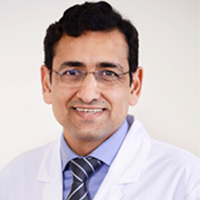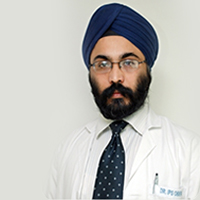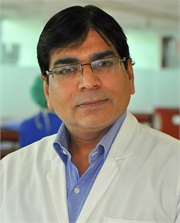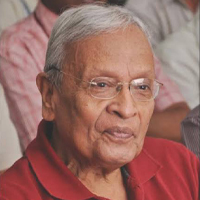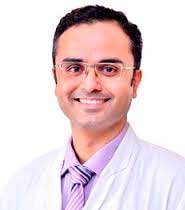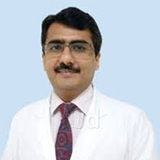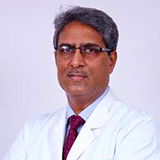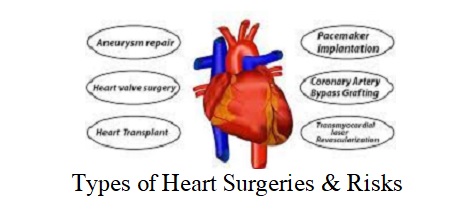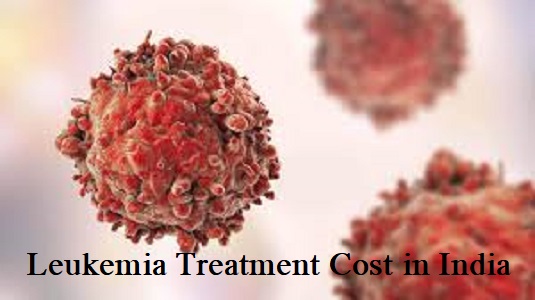Rhytidectomy (Face-Lift Surgery) – Cost, Conditions, Procedure & Recovery
Face lift surgery, also known as rhytidectomy, is a cosmetic operation that renews the face and neck by removing visible signs of aging. As we age, factors such as skin elasticity loss, facial fat displacement, and gravitational effects contribute to sagging skin, deep wrinkles, and jowls. A facelift is a surgical procedure that removes extra facial fat, tightens underlying muscles, and redraps the skin to give the face a smoother and tighter look.
During the surgery, a flap of skin on either side of the face is lifted, allowing the tissues beneath to be reshaped and excess skin removed. This technique leads to a more youthful face shape. A neck lift can often be done concurrently to address concerns like as sagging skin and extra fat in the neck.A facelift might give you a more youthful look by restoring sagging skin and facial features, it does not treat fine lines, UV damage, or skin quality.
One year after facelift surgery, a remarkable 97.8 percent success rate was observed, with the majority of patients evaluating the change in their facial look as very good or above expectations. Facelift surgery is a very pleasant and transformational option for anyone looking for long-term changes in their facial features.
What are the different types of facelifts?
There are several types of facelift operations, each designed to treat different aging issues in different parts of the face and neck. Some of the main types of facelifts are:
- Traditional Facelift: This complex procedure includes incisions around the ears, along the hairline, and behind the chin. It treats the whole face and neck, including sagging skin, wrinkles, and jowls. It is advised for severe face aging.
- SMAS Facelift: It focuses on the bottom two-thirds of the face, tightening muscles and removing extra skin and fat from the cheeks and lower face. It is a version of the standard facelift.
- Deep Plane Facelift: This operation raises the SMAS, fat, and skin as one unit, treating various regions of the face all at once.
- Mid-Facelift: This procedure targets the cheek region, repositioning cheek fat and tightening the skin to correct mid-face sagging.
- Mini-Facelift: A less invasive operation that focuses on the lower face and neck, making it excellent for people who show early signs of sagging. It requires fewer incisions and a faster recovery.
- Cutaneous (Skin) Facelift: This form of facelift focuses just on the skin of the neck and lower face.
Why is Facelift Surgery performed?
Facelift surgery is used to correct age-related changes in the face and neck, resulting in a more youthful look. The main reasons for having a facelift surgery include:
- Sagging Cheeks: Facelifts efficiently treat the sagging look of the cheeks, a traditional aging sign in which the skin loses elasticity and starts to droop.
- Extra Skin at the Lower Jawline: The procedure focuses on the extra skin that develops at the lower jawline, which helps to reshape and tighten the region.
- Deep Skin Folds: Facelifts are performed to eliminate deep skin folds that form from the sides of the nose to the corner of the mouth, often known as nasolabial folds or laugh lines.
- Sagging Skin and Excess Fat in the Neck: Facelift surgery, when combined with a neck lift, addresses sagging skin and excess fat in the neck, reducing the appearance of a double chin.
While facelifts provide considerable benefits, they do not treat small wrinkles, sun damage, creases around the nose and upper lip, or uneven skin tone. The most suitable candidates for facelift surgery are often in their 40s to 60s, have some skin elasticity, and are physically and emotionally well with realistic expectations.
What are the risks factors associated with Facelift Surgery?
Facelift surgery, while typically safe, can involve certain risks and adverse effects, such as:
- Hematoma: The most common effect is a hematoma, which is a collection of blood beneath the skin that causes swelling and pressure. To avoid skin and adjacent tissue damage, surgical intervention must be initiated quickly.
- Scarring: Facelift incision scars are permanent; however, they are usually well hidden along the hairline and natural curves of the face and ear. In some cases, scars may grow higher than normal however corticosteroid injections or additional treatments can help to enhance their look.
- Nerve Injury: Although uncommon, nerve injury can occur and disrupt nerves that control sensation or muscles. Temporary or permanent loss of sensation or muscle movement may occur, resulting in an uneven facial look or expression. Surgical intervention may provide relief.
- Hair Loss: Hair loss may occur at the incision areas, either temporarily or permanently. Permanent hair loss can be treated with surgery to transplant skin containing hair follicles.
- Skin Loss: In rare cases, a facelift may reduce the blood flow to facial tissues, causing skin loss. Medication and proper wound care are used to treat the condition, with additional surgeries to decrease scarring as needed.
- General Surgery Risks: As with any major surgery, facelifts can result in bleeding, infection, and anesthesia-related complications. Certain medical issues or lifestyle choices, such as smoking, could increase these chances.
- Anesthesia Complications: Complications from anesthesia, including responses, are possible.
- Wound Healing Issues: Poor wound healing is a potential risk, particularly for those who have certain medical problems or live a lifestyle that includes smoking.
- Infection: There is a risk of infection after facelift surgery.
- Skin Sensation Changes: Skin sensation or numbness changes may occur, with either temporary or permanent results.
- Prolonged swelling: Some people may endure persistent swelling after surgery.
- Skin Color abnormalities: Changes in skin color or abnormalities might occur, affecting the cosmetic effect.
What happens before the Facelift Surgery in India?
Before receiving facelift surgery in India, the patient will have a comprehensive discussion with a plastic surgeon. This initial appointment includes a complete physical, medical history review, and discussion of your expectations. The surgeon assesses your entire health, psychological state, and facial features. The consultation involves a face evaluation and close-up pictures to help with surgery planning.
- Medical History and Exam: You can anticipate queries regarding previous and current medical issues, operations (including plastic surgeries), and lifestyle habits like smoking or alcohol consumption. A physical examination will be performed, and medical documents from your doctor may be requested.
- Medication Review: The patient will provide information on all medications, including prescription and non-prescription pharmaceuticals, herbal supplements, vitamins, and dietary supplements.
- Facial examination and photography: The surgeon examine bone structure, facial form, fat distribution, and skin quality. Close-up images from various angles are taken to help with surgical planning.
- Expectations Discussion: The surgeon discusses your expectations for the facelift and explains the potential changes in look. It is stressed that a facelift does not correct fine wrinkles or facial asymmetries.
What happens duringthe Facelift Surgery in India?
Facelift surgery in India consists of many main processes designed to achieve the desired facial rejuvenation, such as:
- Anesthesia: Depending on the surgeon’s recommendation and the kind of facelift, the operation is conducted under general anesthesia (asleep) or IV sedation.
- Incisions: The surgeon creates incisions according to the facelift procedure selected and the patient’s preferences. Commonly used incision options include:
- Traditional facelift incision: It begins at the temples, goes across the front of the ears, and finishes behind the ears in the lower scalp. To enhance the neck, an incision under the chin is optional.
- Limited incision: A shorter incision that begins above the ear and wraps around the front of the ear without reaching the lower scalp.
- Neck lift incision: It begins in front of the earlobe and extends around the ear into the lower scalp, ending with a little incision beneath the chin.
- Procedure:The surgeon lifts the skin, tightens the tissues and muscles, and may sculpt, remove, or rearrange the face fat. The facial skin is wrapped over the newly moved features of the face.
- Closing Incisions:After making the appropriate cosmetic modifications, the surgeon closes the incisions using a variety of methods:
- Dissolvable sutures.
- Stitches that may require removal after a few days.
- Skin glue.
- Facial contouring:The procedure might include relocating and/or removing face skin and fat, as well as strengthening facial muscles. The particular actions depend on the type of facelift selected and the individual’s expectations.
- Drainage Tube and Bandages: In some cases, a surgical drainage tube is implanted and bandages are put across the face to help with the early recovery. These strategies help in the management of swelling and lower the possibility of fluid accumulation.
- Closure: Once the desired “lift” has been achieved, extra skin is cut and closed with a combination of absorbable and permanent sutures. Staples may be used in the hairline without harming the hair follicles.
- Postoperative Dressing: A facelift dressing is used to apply pressure to the incision lines and surgical region, reducing swelling and minimizing the risk of fluid accumulation in the wound.
What happens after the Facelift Surgery in India?
Patients who underwent facelift surgery in India may expect to endure some common postoperative side effects. These symptoms may include mild to severe pain, incision drainage, swelling, bruising, and numbness. Bandages are usually given to the incisions to reduce swelling and bruising, and a drainage tube may be inserted behind the ears to drain excess blood or fluid.
During the first few days of recovery, it is important to rest with the head elevated, take recommended pain medication, and apply cold packs to the face to reduce pain and swelling. Follow-up sessions are planned over the next two months to remove the drainage tube, apply antibiotic ointment, and check the wound.
During the first three weeks, it is important to practice self-care at home, including following wound care recommendations, avoiding picking at scabs, using certain shampoos and soaps, and avoiding sun exposure. A facelift’s results are not permanent; they normally last around ten years. After surgery, patients are given specific postoperative care instructions as well as a prescription for pain medication if needed. Overall, a facelift gives a more youthful appearance, but its effects are not permanent, and the aging process continues over time.
What is the cost of a Facelift Surgery in India?
The cost of facelift surgery in India varies depending on the method and case complexity. A minor facelift may cost roughly $2100, while a complete facelift might cost over $4200. On average, the cost is between $1500 and $3000, however, this is an estimate; the exact cost is determined after a consultation with a surgeon. The complete results are visible after approximately three months, and the effects can continue for eight to twelve years, depending on the skin condition.
What is the success rate of a Facelift Surgery in India?
The success rate for facelift surgery in India is said to be between 80 and 90 %. The operation is intended to treat signs of aging such as sagging skin, wrinkles, and loss of face firmness. Patients often notice a considerable change in their facial appearance, with the success rate showing effective outcomes in creating a younger and more rejuvenated look. Individual results may vary, and factors such as surgeon expertise, patient health, and commitment to postoperative care all contribute to overall success.
Top Hospitals for Facelift Surgery in India
India has numerous of the very best hospitals known for their expertise in facelift surgery. These top hospitals for facelift surgery in India provide advanced facilities, innovative surgical technology, and highly trained medical personnel who specialize in cosmetic operations. Patients seeking facelift surgery in India may benefit from the knowledge of competent surgeons as well as the full healthcare services offered by these top hospitals. The hospitals focus on patient safety, comfort, and best outcomes, making them popular choices for those thinking about face rejuvenation operations.
- BLK MAX Super Specialty Hospital
- Fortis Memorial Research Institute Gurgaon
- Indraprastha Apollo Hospital
- MAX Super Speciality Hospital Shalimar Bagh
- Global Hospital Parel
- Medanta Hospital Delhi
- Manipal Hospital Delhi
- Artemis Hospital Gurgaon
Best Doctors for Facelift Surgery in India
India is home to experienced and qualified plastic surgeons who specialize in facelift surgery. These best doctors for facelift surgery in India are known for their knowledge, experience, and dedication to providing excellent outcomes in face rejuvenation. With an emphasis on patient pleasure and safety, these plastic surgeons use modern procedures to treat many aspects of aging, offering tailored solutions to each person.
- Anil Behl – Fortis Memorial Research Institute, Gurugram
- Amit Gupta – Divine Cosmetic Surgery, New Delhi
- Avtar Singh Bath – BLK Super Speciality Hospital, New Delhi
- Manoj K Johar – Max Super Speciality Hospital, New Delhi
- Lokesh Kumar – BLK Super Speciality Hospital, New Delhi
- Surendra Kumar Chawla – Fortis Memorial Research Institute, Gurugram
- KaveshvarGhura – Fortis Memorial Research Institute, Gurugram
- Prateek Arora – Max Superspeciality Group, New Delhi
- R.K Seth
- Amitabh Singh
Contact Form
Attach Medical Report
Top Doctors & Surgeons in India
Why Choose Us

Personalized Care
24x7 Supports
Top NABH and JCI accredited Hospitals
Free Cost Estimation & Medical Opinion from Specialist
Get Free Tele/Video Consultation
Visa and Traveling Assistance
Post-surgery with Assistance in Follow-ups


